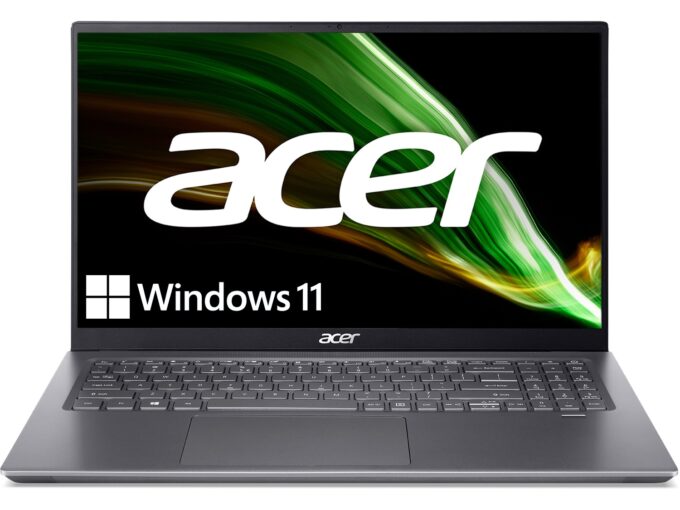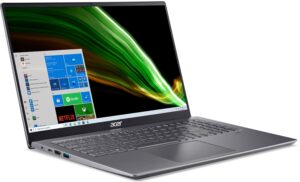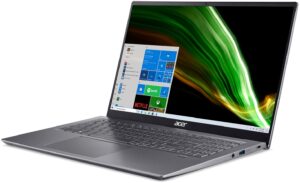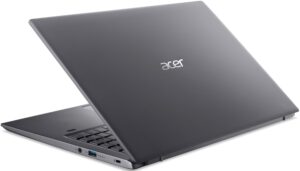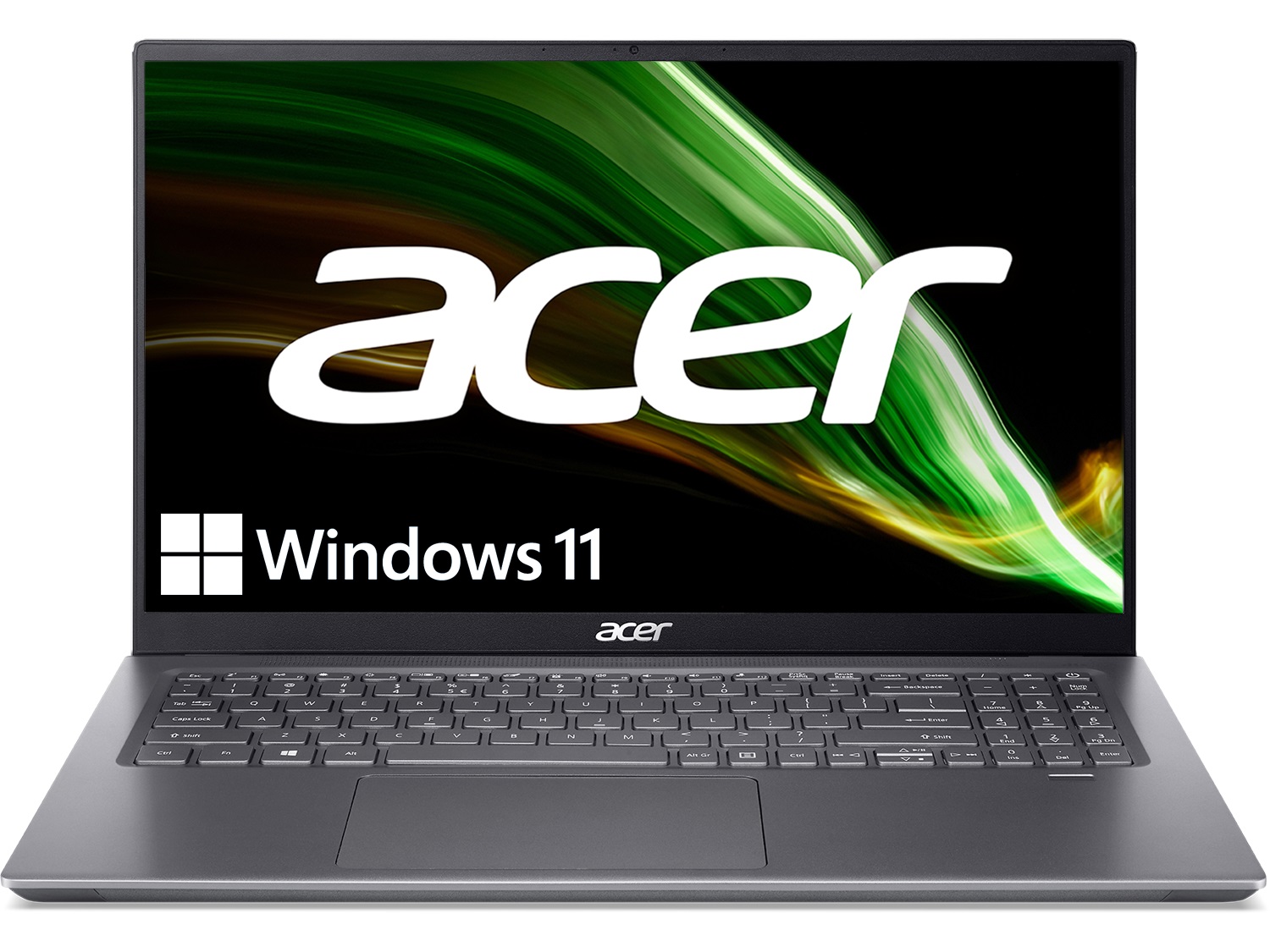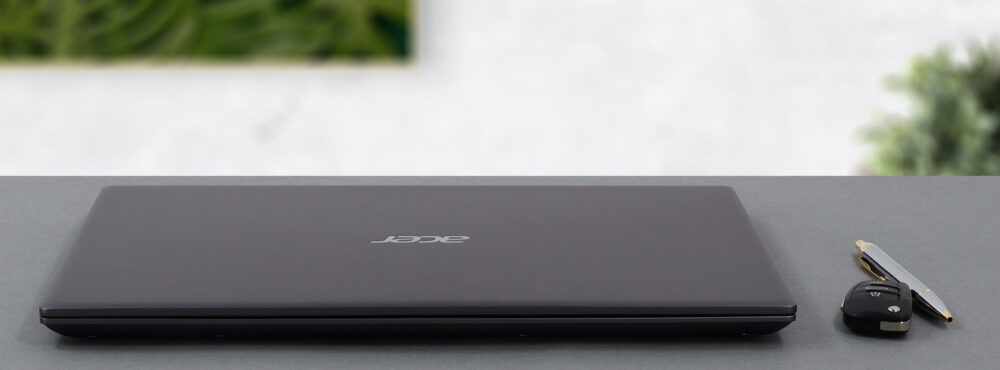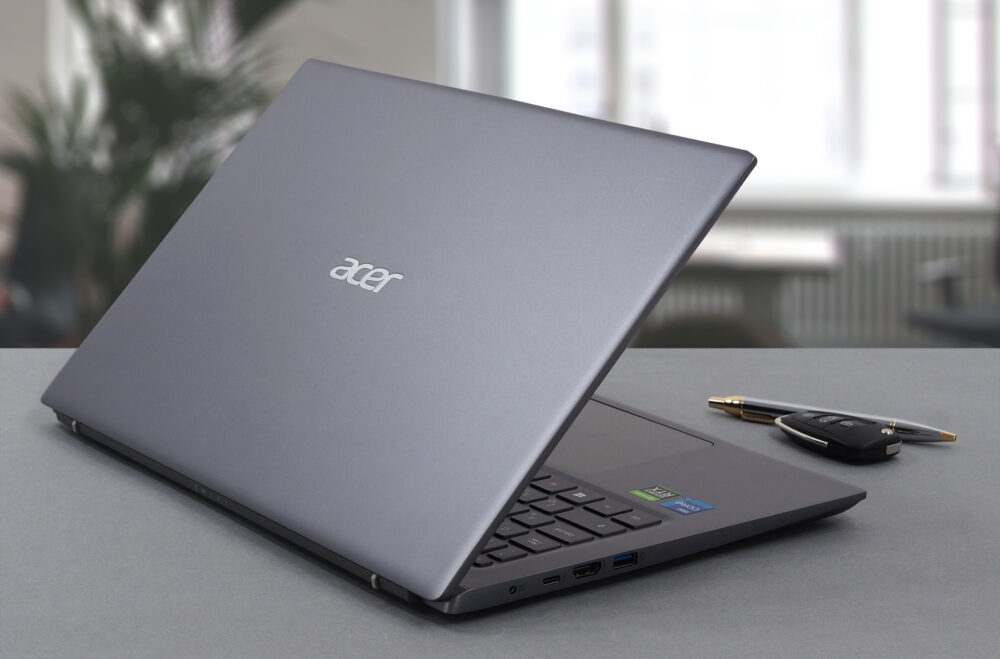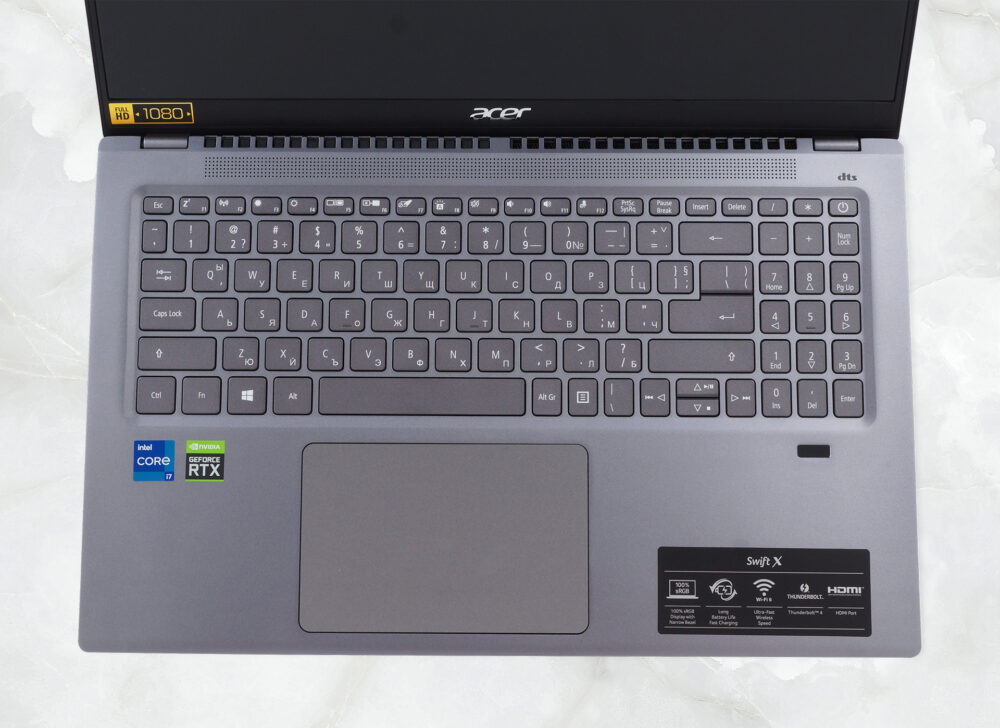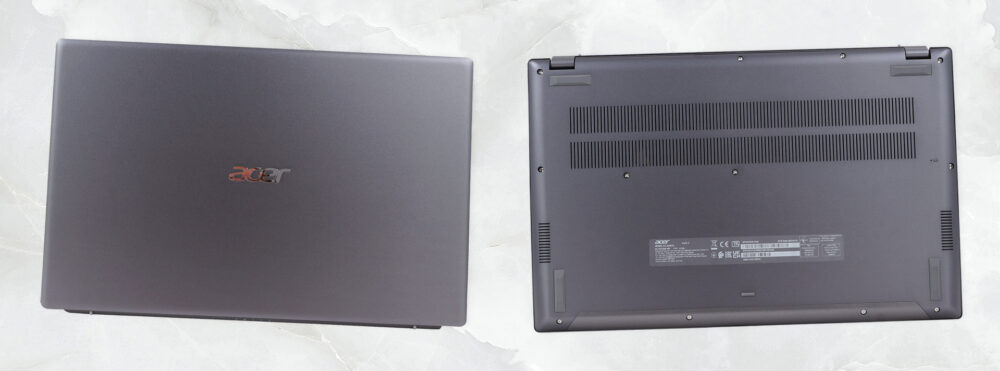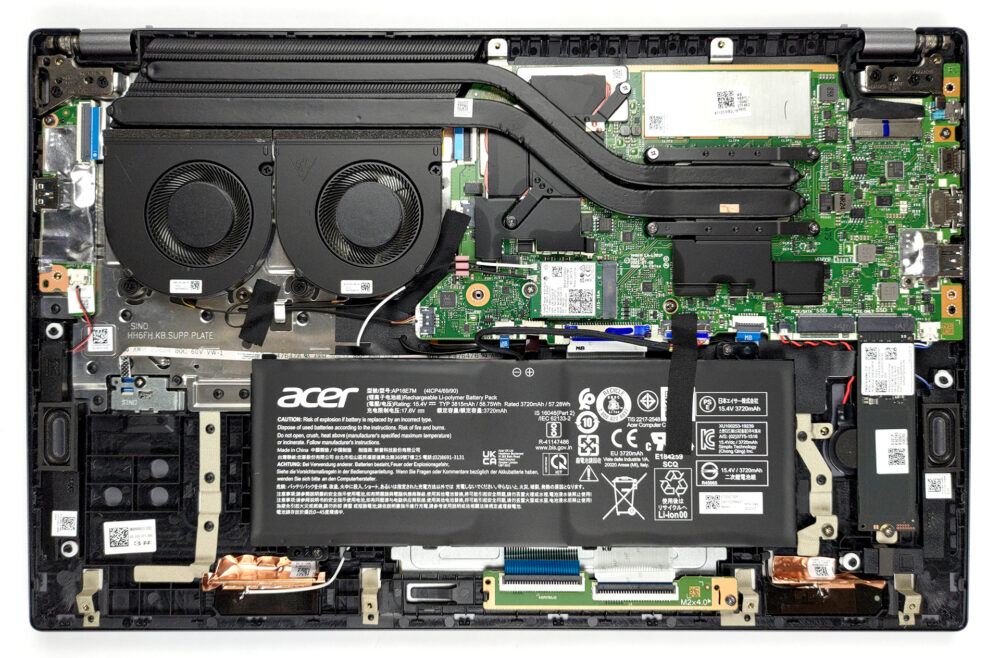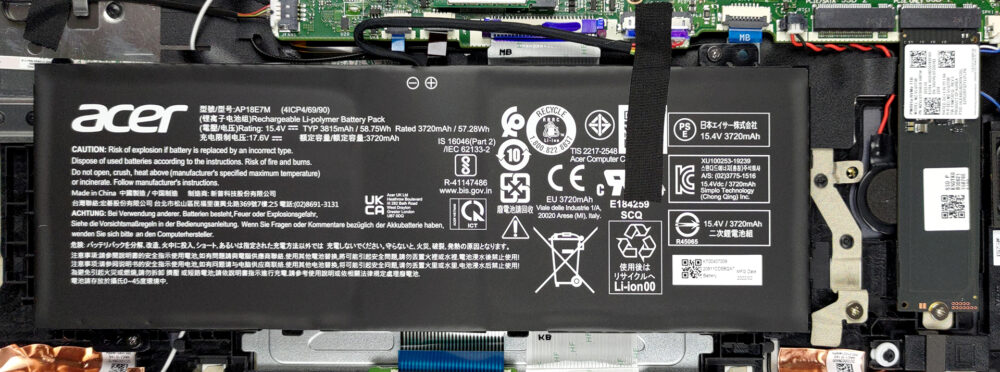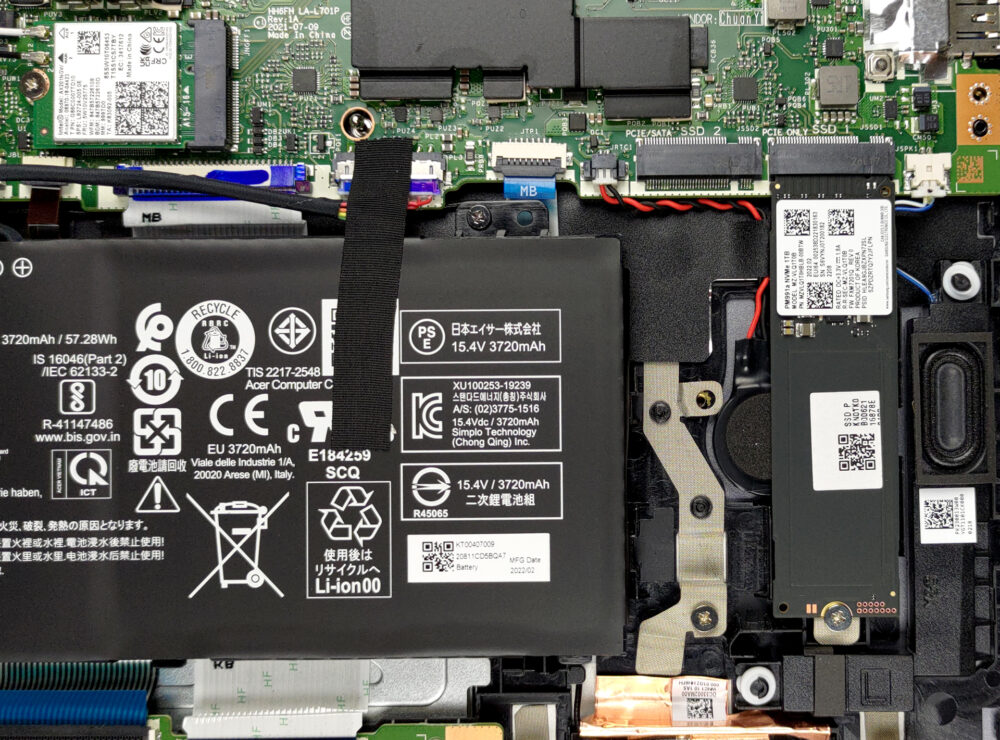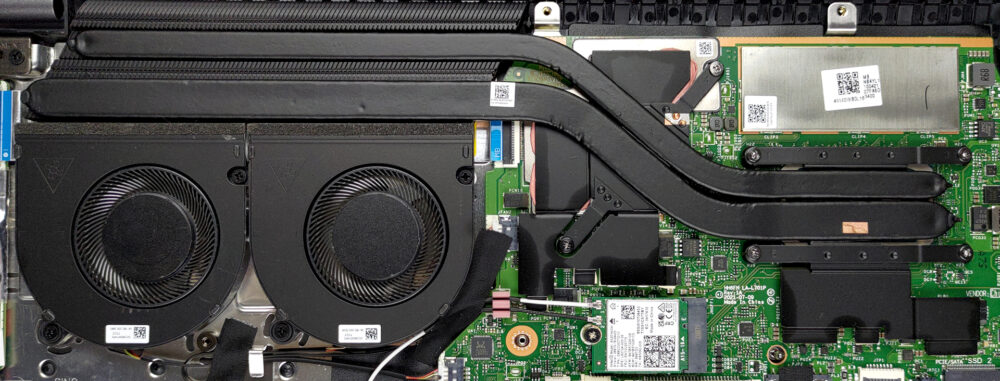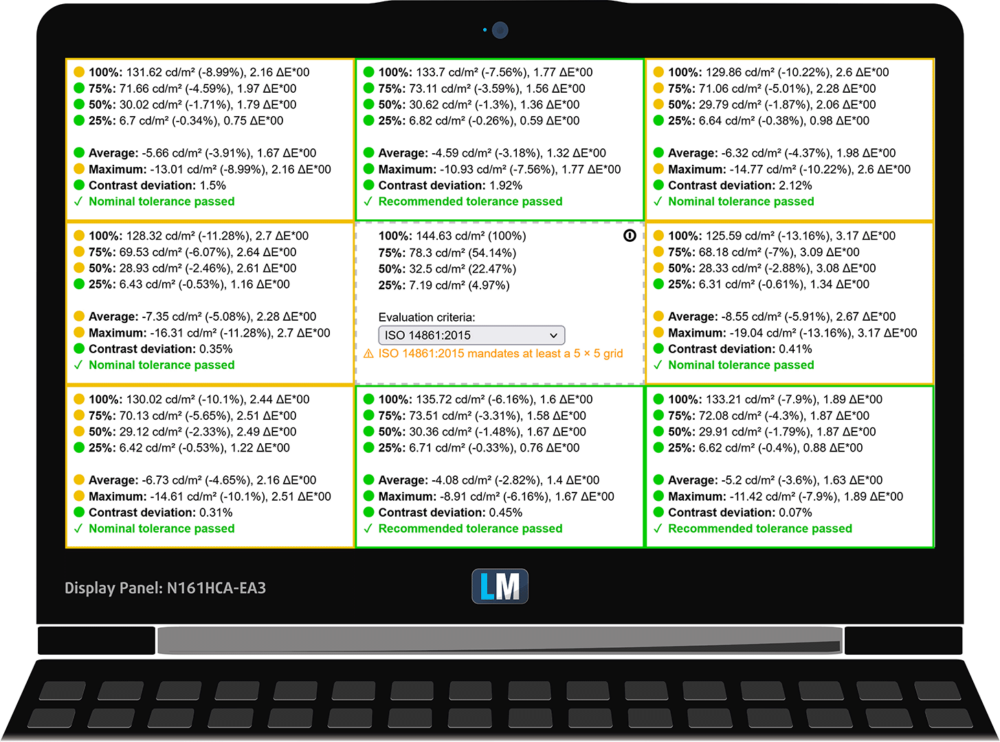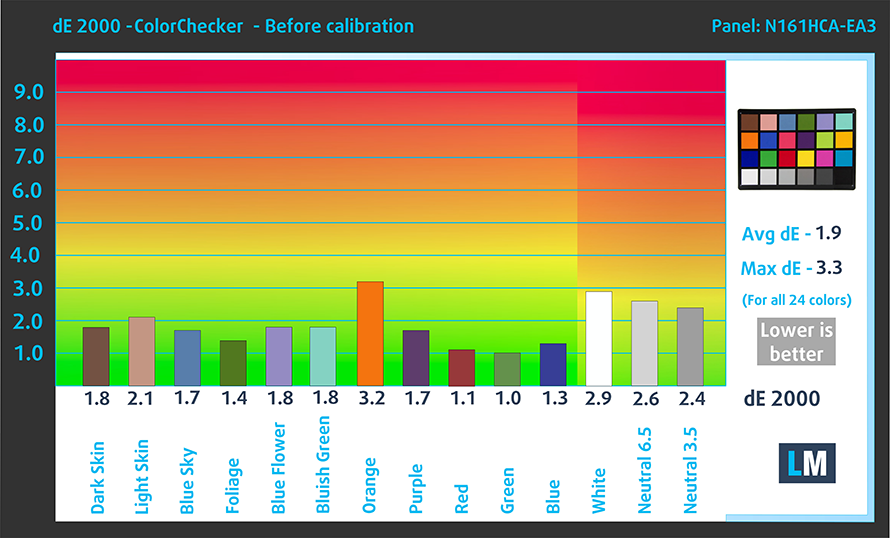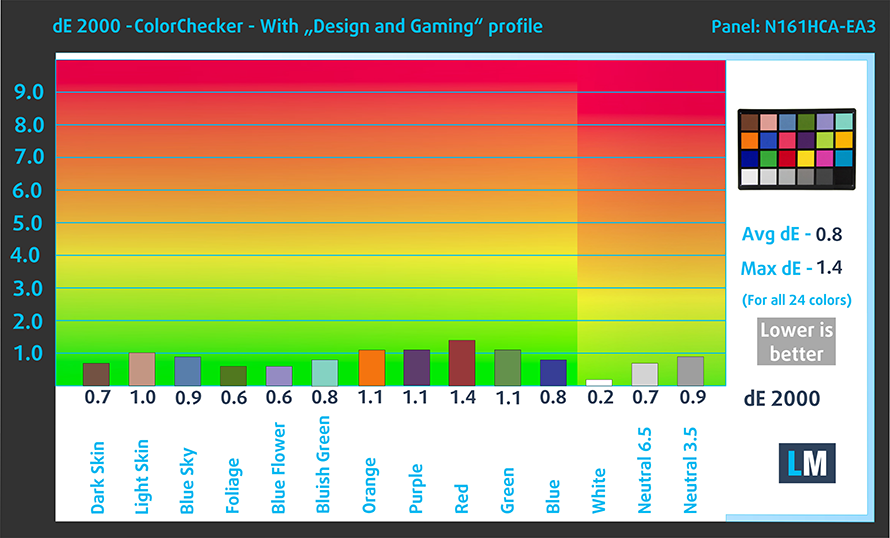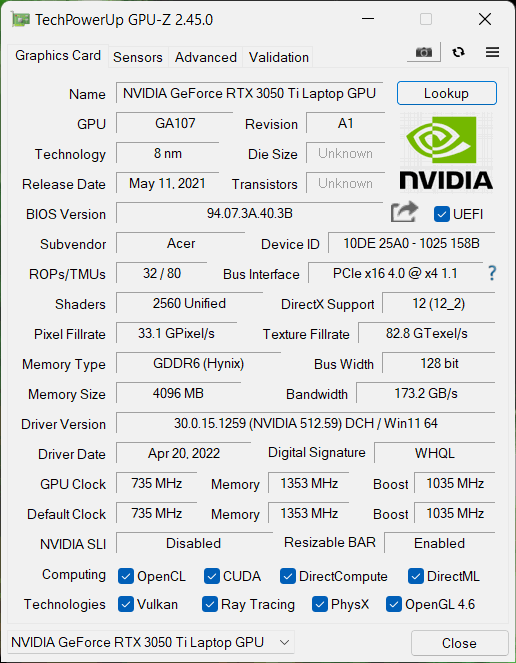Acer Swift X (SFX16-51G) review – high quality product packed with features
 Not a long time ago we tested the Acer Swift X. It was a surprisingly powerful device, that had its hardware bunched up in a 14-inch chassis. Well, today, we were able to get the 16-inch version of this notebook. However, instead of an AMD ULV processor, it comes paired with a 35W Tiger Lake CPU from Intel.
Not a long time ago we tested the Acer Swift X. It was a surprisingly powerful device, that had its hardware bunched up in a 14-inch chassis. Well, today, we were able to get the 16-inch version of this notebook. However, instead of an AMD ULV processor, it comes paired with a 35W Tiger Lake CPU from Intel.
This immediately means that the laptop won’t be perfect for gaming, but it will be really suitable for content creation or photo editing. In fact, it can also be configured with a 40W RTX 3050 Ti.
Since the 16-inch form factor is becoming a new normal, we don’t think it’s a groundbreaking achievement from Acer. However, the manufacturer is very confident in their product, as it states it comes with 100% sRGB coverage. A key to accurate color representation on the other hand is the Acer ExaColor technology.
You can check the prices and configurations in our Specs System: https://laptopmedia.com/series/acer-swift-x-sfx16-51g/
Contents
Specs Sheet
- HDD/SSD
- up to 1000GB SSD
- M.2 Slot
- 2x 2280 M.2 NVMe slots See photo
- RAM
- up to 16GB
- OS
- Windows 11 Home
- Battery
- 58.7Wh, 4-cell, 59Wh, 4-cell
- Body material
- Aluminum
- Dimensions
- 368.3 x 236.22 x 18.9 mm (14.50" x 9.30" x 0.74")
- Weight
- 1.90 kg (4.2 lbs)
- Ports and connectivity
- 2x USB Type-A
- 3.2 Gen 1 (5 Gbps)
- 1x USB Type-C
- Thunderbolt 4, Power Delivery (PD), DisplayPort
- HDMI
- 2.0
- Card reader
- Ethernet LAN
- Wi-Fi
- 802.11ax
- Bluetooth
- 5.1
- Audio jack
- 3.5mm Combo Jack
- Features
- Fingerprint reader
- Web camera
- HD
- Backlit keyboard
- Microphone
- Dual Built-in Microphones with Acer Purified Voice
- Speakers
- 2 Front-Firing Speakers, DTS Audio
- Optical drive
- Security Lock slot
- Kensington Lock
All Acer Swift X (SFX16-51G) configurations
What’s in the box?
The packaging here is pretty standard, and it includes some paperwork, as well as a 90W charger.
Design and construction
The Swift X is a beautiful device with a sleek design and an all-aluminum chassis. Yes, even the bottom panel is made out of metal. Also, we were surprised to find that the laptop is really rigid, and is resistant to flex.
It weighs 1.90 kg and has a profile of 18.9mm, which makes it both thin and light, considering the screen size. Interestingly, you can notice a chamfered edge on the inside of the lid, which is a bit weird.
Nevertheless, the lid can be opened with one hand. This reveals a matte display with thin bezels all around it. An HD Web camera is placed right above it. Here, the lid features a lever mechanism that lifts the backside of the base, as soon as it reaches 90°.
Looking at the keyboard, we see a NumPad and a backlight. Which is great. The keycaps are decent in size, while the key travel is acceptable. We are also happy with the feedback, which is not only clicky but also consistent across all keys.
Further below, you will see the buttonless touchpad. It has a smooth surface, although the tracking is not the best out there. On the bright side, you get a fingerprint reader.
Now, let’s take a look at the bottom panel. There, we find the two speaker cutouts and the rather large ventilation grill. Another large grill acts as an exhaust for the hot air, which is aimed toward the bottom of the display.
Ports
On the left side, there is the charging plug, a Thunderbolt 4 connector, an HDMI connector, and a USB Type-A 3.2 (Gen. 1) port. Switch sides to find a Kensington lock slot, another USB Type-A 3.2 (Gen. 1) port, and an audio jack.
Disassembly, upgrade options and maintenance
To get inside this notebook, you need to undo 12 Torx-head screws. After that, pry the bottom panel with a plastic tool, and lift it away from the chassis.
Here, the battery has a capacity of 59Wh. It lasts for 13 hours of Web browsing, or 9 hours of video playback. It is really easy to take the battery out. You just need to unplug the connector from the motherboard and undo a couple of Phillips-head screws.
Unfortunately, the memory is soldered to the motherboard. You can pair the laptop with up to 16GB of LPDDR4x RAM. On the other hand, there are two M.2 PCIe x4 slots for storage upgrades.
The cooling comprises two long heat pipes, connected to a large heat sink. In addition, two fans blow the heat away from the device, while a couple of cooling elements manage the thermals of the VRMs and the graphics memory.
Display quality
Acer Swift X (SFX16-51G) has an IPS panel, model number Innolux N161HCA-EA3 (CMN160B). Its diagonal is 16.1″ (41 cm), and the resolution is 1920 х 1080 pixels. The screen ratio is 16:9, and we are looking at a pixel density of – 137 ppi, and a pitch of 0.186 х 0.186 mm. The screen turns into Retina when viewed at distance equal to or greater than 64cm (25″) (from this distance one’s eye stops differentiating the separate pixels, and it is normal for looking at a laptop).
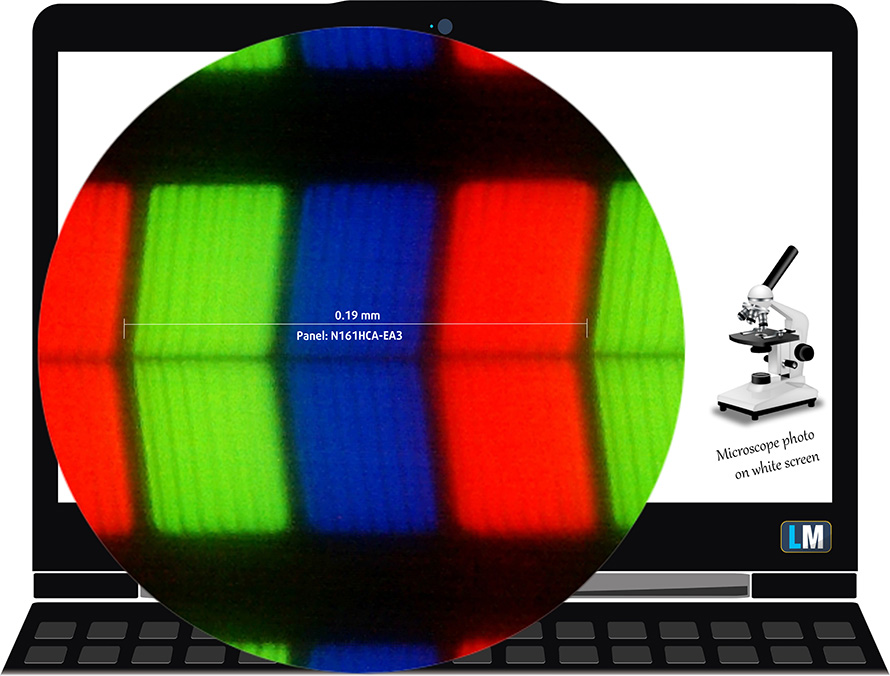
It has comfortable viewing angles. We offer images at 45° to evaluate image quality.

Also, a video with locked focus and exposure.
The measured maximum brightness of 281 nits in the middle of the screen and 260 nits as an average for the whole area, with a maximum deviation of 10%. The Correlated Color Temperature on a white screen is 6970K – slightly colder than the optimal for the sRGB standard of 6500K.
In the illustration below you can see how the display performs from a uniformity perspective. In other words, the leakage of light from the light source.
Values of dE2000 over 4.0 should not occur, and this parameter is one of the first you should check if you intend to use the laptop for color-sensitive work. The contrast ratio is very good – 1520:1.
To make sure we are on the same page, we would like to give you a little introduction to the sRGB color gamut and the Adobe RGB. To start, there’s the CIE 1976 Uniform Chromaticity Diagram that represents the visible specter of colors by the human eye, giving you a better perception of the color gamut coverage and the color accuracy.
Inside the black triangle, you will see the standard color gamut (sRGB) that is being used by millions of people on HDTV and on the web. As for the Adobe RGB, this is used in professional cameras, monitors, etc for printing. Basically, colors inside the black triangle are used by everyone and this is the essential part of the color quality and color accuracy of a mainstream notebook.
Still, we’ve included other color spaces like the famous DCI-P3 standard used by movie studios, as well as the digital UHD Rec.2020 standard. Rec.2020, however, is still a thing of the future and it’s difficult for today’s displays to cover that well. We’ve also included the so-called Michael Pointer gamut, or Pointer’s gamut, which represents the colors that naturally occur around us every day.
The yellow dotted line shows Acer Swift X (SFX16-51G)’s color gamut coverage.
Its display covers 98% of the sRGB/ITU-R BT.709 (web/HDTV standard) in CIE1976.
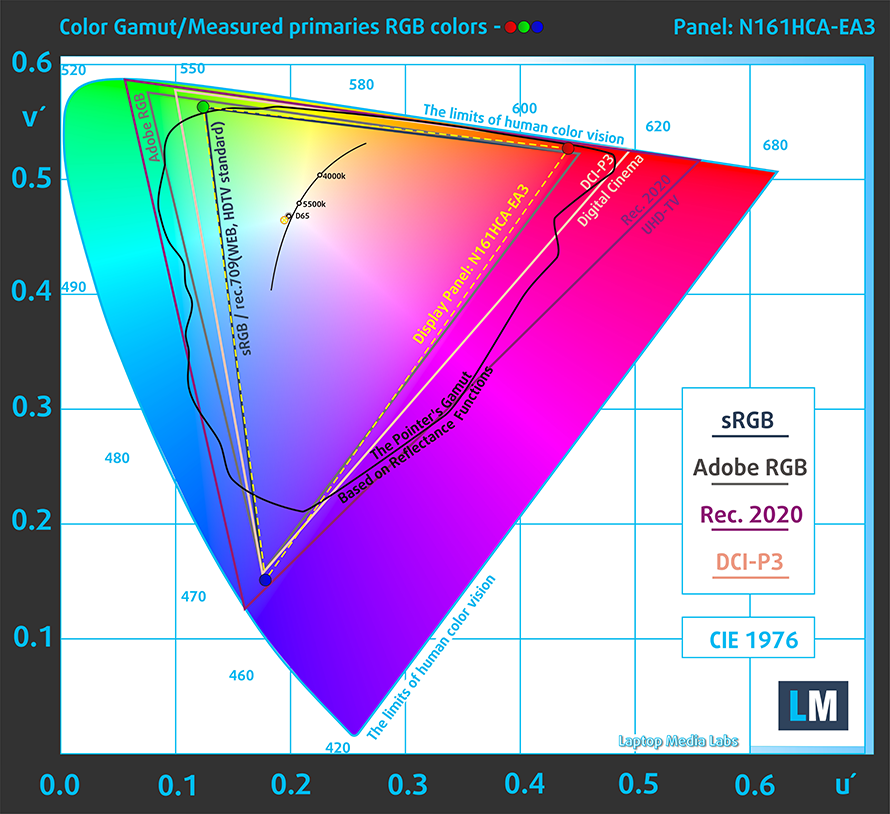
Our “Design and Gaming” profile delivers optimal color temperature (6500K) at 140 cd/m2 luminance and sRGB gamma mode.
We tested the accuracy of the display with 24 commonly used colors like light and dark human skin, blue sky, green grass, orange, etc. You can check out the results at factory condition and also, with the “Design and Gaming” profile.
Below you can compare the scores of Acer Swift X (SFX16-51G) with the default settings (left), and with the “Gaming and Web design” profile (right).
The next figure shows how well the display is able to reproduce really dark parts of an image, which is essential when watching movies or playing games in low ambient light.
The left side of the image represents the display with stock settings, while the right one is with the “Gaming and Web Design” profile activated. On the horizontal axis, you will find the grayscale, and on the vertical axis – the luminance of the display. On the two graphs below you can easily check for yourself how your display handles the darkest nuances but keep in mind that this also depends on the settings of your current display, the calibration, the viewing angle, and the surrounding light conditions.
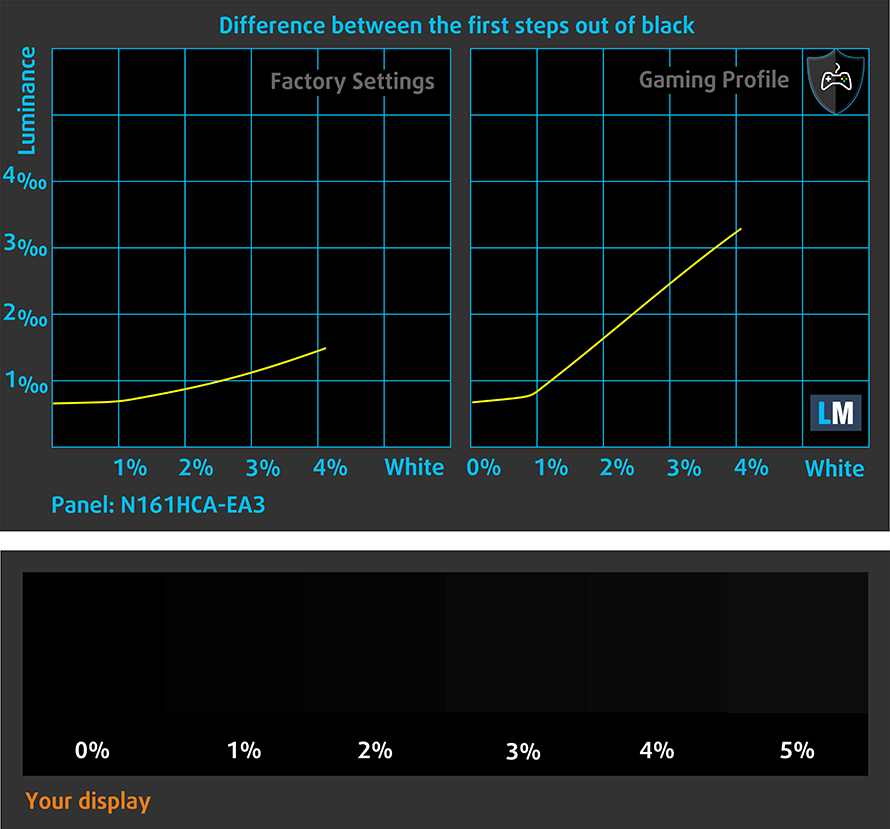
Response time (Gaming capabilities)
We test the reaction time of the pixels with the usual “black-to-white” and “white-to-black” method from 10% to 90% and vice versa.
We recorded Fall Time + Rise Time = 23 ms.
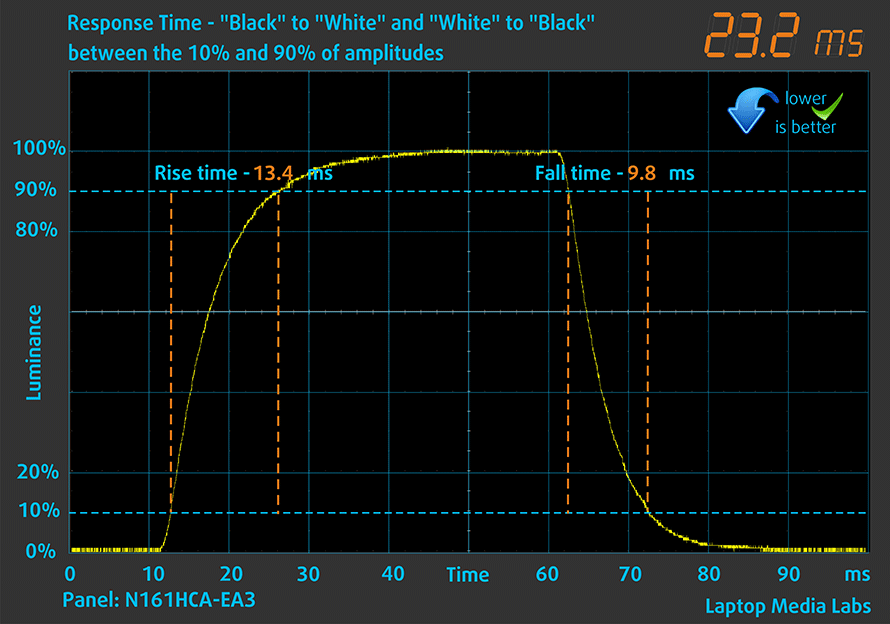
After that, we test the reaction time of the pixels with the usual “Gray-to-Gray” method from 50% White to 80% White and vice versa between 10% and 90% of the amplitude.

PWM (Screen flickering)
Pulse-width modulation (PWM) is an easy way to control monitor brightness. When you lower the brightness, the light intensity of the backlight is not lowered, but instead turned off and on by the electronics with a frequency indistinguishable to the human eye. In these light impulses, the light/no-light time ratio varies, while brightness remains unchanged, which is harmful to your eyes. You can read more about that in our dedicated article on PWM.
Acer Swift X (SFX16-51G)’s backlight does not use PWM for any brightness level. This makes it comfortable for long exposures.

Blue light emissions
Installing our Health-Guard profile not only eliminates PWM but also reduces the harmful Blue Light emissions while keeping the colors of the screen perceptually accurate. If you’re not familiar with the Blue light, the TL;DR version is – emissions that negatively affect your eyes, skin, and your whole body. You can find more information about that in our dedicated article on Blue Light.
Buy our profiles
Since our profiles are tailored for each individual display model, this article and its respective profile package are meant for Acer Swift X (SFX16-51G) configurations with 16.1″ FHD IPS Innolux N161HCA-EA3 (CMN160B).
*Should you have problems with downloading the purchased file, try using a different browser to open the link you’ll receive via e-mail. If the download target is a .php file instead of an archive, change the file extension to .zip or contact us at [email protected].
Read more about the profiles HERE.
In addition to receiving efficient and health-friendly profiles, by buying LaptopMedia's products you also support the development of our labs, where we test devices in order to produce the most objective reviews possible.

Office Work
Office Work should be used mostly by users who spend most of the time looking at pieces of text, tables or just surfing. This profile aims to deliver better distinctness and clarity by keeping a flat gamma curve (2.20), native color temperature and perceptually accurate colors.

Design and Gaming
This profile is aimed at designers who work with colors professionally, and for games and movies as well. Design and Gaming takes display panels to their limits, making them as accurate as possible in the sRGB IEC61966-2-1 standard for Web and HDTV, at white point D65.

Health-Guard
Health-Guard eliminates the harmful Pulse-Width Modulation (PWM) and reduces the negative Blue Light which affects our eyes and body. Since it’s custom tailored for every panel, it manages to keep the colors perceptually accurate. Health-Guard simulates paper so the pressure on the eyes is greatly reduced.
Get all 3 profiles with 33% discount
Sound
Acer Swift X (SFX16-51G)’s speakers produce a sound of decent quality. However, its low, mid, and high tones all have some deviations from clarity.
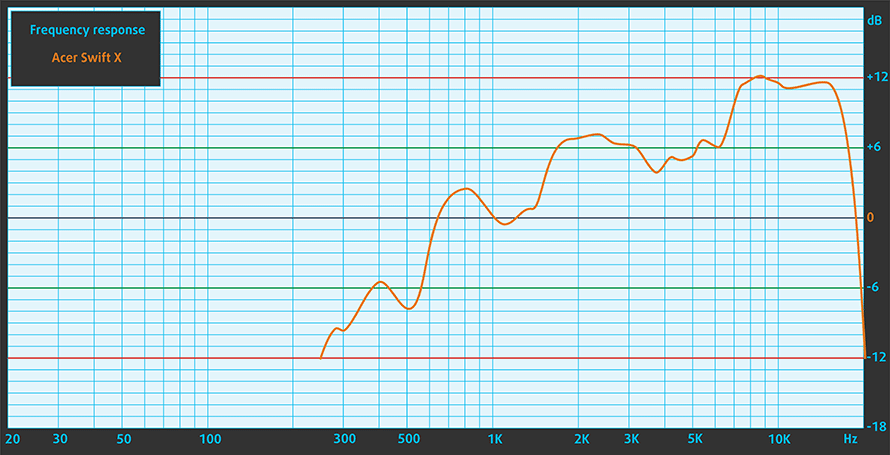
Drivers
All drivers and utilities for this notebook can be found here: https://www.acer.com/ac/en/US/content/support-product/9129?b=1
Battery
Now, we conduct the battery tests with the Windows Better performance setting turned on, screen brightness adjusted to 120 nits, and all other programs turned off except for the one we are testing the notebook with. This device’s 59Wh battery pack lasted us for 13 hours and 8 minutes of Web browsing, or 9 hours and 5 minutes of video playback.
In order to simulate real-life conditions, we used our own script for automatic web browsing through over 70 websites.
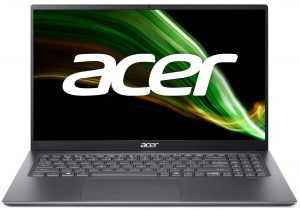
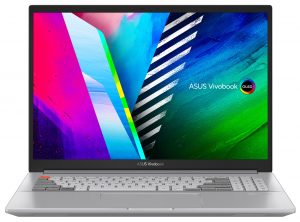
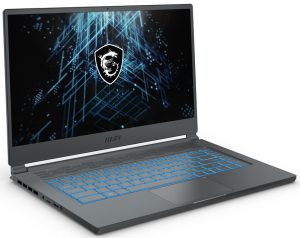
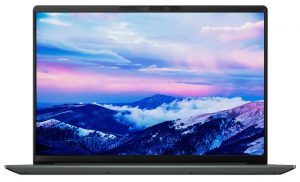
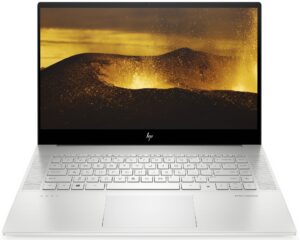
For every test like this, we use the same video in HD.





CPU options
We were able to find this notebook with the Core i5-11320H and the Core i7-11390H. Both of them are quad-core CPUs, built on the Tiger Lake-H35 architecture.
Results are from the Cinebench R23 CPU test (the higher the score, the better)
Results are from our Photoshop benchmark test (the lower the score, the better)
GPU options
Graphics-wise, you can choose between the RTX 3050 and RTX 3050 Ti, both of which have a 40W TGP.
Results are from the 3DMark: Time Spy (Graphics) benchmark (higher the score, the better)
Results are from the 3DMark: Fire Strike (Graphics) benchmark (higher the score, the better)
Results are from the 3DMark: Wild Life benchmark (higher the score, the better)
Results are from the Unigine Superposition benchmark (higher the score, the better)
Gaming tests
| Metro Exodus | Full HD, Low (Check settings) | Full HD, High (Check settings) | Full HD, Extreme (Check settings) |
|---|---|---|---|
| Average FPS | 84 fps | 36 fps | 17 fps |
| Borderlands 3 | Full HD, Medium (Check settings) | Full HD, High (Check settings) | Full HD, Badass (Check settings) |
|---|---|---|---|
| Average fps | 75 fps | 48 fps | 36 fps |

| Shadow of the Tomb Raider (2018) | Full HD, Lowest (Check settings) | Full HD, Medium (Check settings) | Full HD, High (Check settings) |
|---|---|---|---|
| Average | 111 fps | 66 fps | 59 fps |

| Tom Clancy’s Ghost Recon Wildlands | Full HD, Medium (Check settings) | Full HD, High (Check settings) | Full HD, Very High (Check settings) |
|---|---|---|---|
| Average fps | 68 fps | 62 fps | 54 fps |
Temperatures and comfort
Max CPU load
In this test we use 100% on the CPU cores, monitoring their frequencies and chip temperature. The first column shows a computer’s reaction to a short load (2-10 seconds), the second column simulates a serious task (between 15 and 30 seconds), and the third column is a good indicator of how good the laptop is for long loads such as video rendering.
Average core frequency (base frequency + X); CPU temp.
| Intel Core i7-11390H (35W TDP) | 0:02 – 0:10 sec | 0:15 – 0:30 sec | 10:00 – 15:00 min |
|---|---|---|---|
| Acer Swift X (SFX16-51G) | 3.80 GHz @ 92°C @ 55W | 3.66 GHz @ 87°C @ 50W | 3.16 GHz @ 70°C @ 35W |
| Dell Vostro 14 5410 | 2.65 GHz @ 91°C @ 26W | 2.43 GHz @ 91°C @ 22W | 2.34 GHz @ 91°C @ 21W |
| HP Envy 14 (14-eb1000) | 3.42 GHz @ 73°C @ 50W | 3.35 GHz @ 84°C @ 50W | 3.54 GHz @ 83°C @ 45W |
The processor here performs well in the first two checkpoints, while in the end, it turns out to be around 400 MHz behind the same CPU inside of the HP Envy 14 (14-eb1000).
Real-life gaming
| NVIDIA GeForce RTX 3050 Ti | GPU frequency/ Core temp (after 2 min) | GPU frequency/ Core temp (after 30 min) | GPU frequency/ Core temp (Max fan) |
|---|---|---|---|
| Acer Swift X (SFX16-51G) | 1180 MHz @ 59°C @ 40W | 1177 MHz @ 61°C @ 40W | – |
| Lenovo ThinkBook 15p Gen 2 | 1539 MHz @ 69°C @ 50W | 1536 MHz @ 69°C @ 50W | – |
| HP Omen 16 (16-b0000) | 1781 MHz @ 68°C @ 80W | 1767 MHz @ 71°C @ 80W | – |
| HP Envy 15 (15-ep1000) | 1681 MHz @ 87°C @ 75W | 1376 MHz @ 74°C @ 48W | – |
| ASUS ZenBook Pro 15 OLED (UM535) | 1530 MHz @ 66°C @ 50W | 1529 MHz @ 68°C @ 50W | – |
| HP Pavilion Gaming 15 (15-dk2000) | 1613 MHz @ 65°C @ 60W | 1576 MHz @ 73°C @ 60W | – |
| MSI Sword 15 | 1633 MHz @ 73°C @ 60W | 1605 MHz @ 79°C @ 60W | 1644 MHz @ 69°C @ 60W |
| Dell XPS 15 9510 | 1187 MHz @ 74°C @ 40W | 1293 MHz @ 75°C @ 44W | – |
| Dell G15 5511 | 1882 MHz @ 71°C @ 88W | 1878 MHz @ 72°C @ 89W | – |
| Dell G15 5515 | 1857 MHz @ 76°C @ 80W | 1850 MHz @ 77°C @ 80W | – |
| Acer Nitro 5 (AN515-57) | 1616 MHz @ 70°C @ 66W | 1607 MHz @ 72°C @ 65W | 1632 MHz @ 69°C @ 66W |
| MSI Katana GF76 | 1619 MHz @ 76°C @ 60W | 1594 MHz @ 82°C @ 60W | 1632 MHz @ 70°C @ 60W |
Now, the clock speeds of this laptop’s RTX 3050 Ti are low. But the reason for that is definitely not the cooling, because the device is able to sustain its 40W TGP budget. Instead, we feel that the 90W charger is the culprit of the low power limit, hence low operating frequency.
Gaming comfort
On the other hand, the 16-inch Swift X doesn’t run too loudly, nor it is too warm on its keyboard. Interestingly, the fans draw some of their air through the right side of the keyboard, which makes the NumPad section really cool.
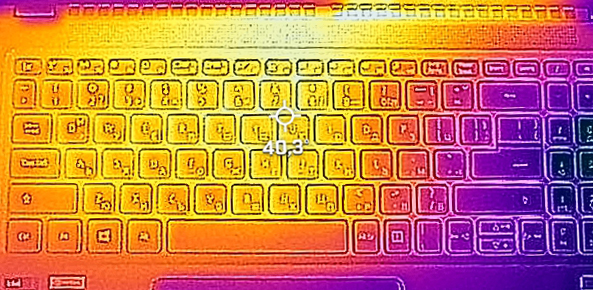
Verdict
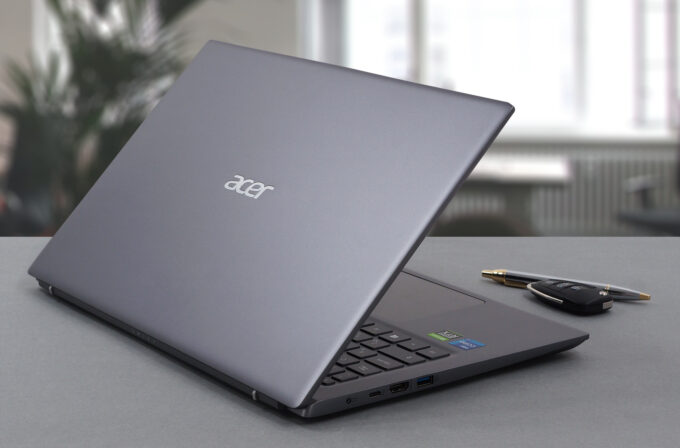 When we first got the laptop, there was no information indicating that it offers several “performance modes”. Well, you can only access them by toggling through them via the shortcut combination of “Fn” + “F”. This was frustrating as we had to rerun half of our performance tests. On the other hand, this showed us that the major difference between the “Balanced” and the “Performance” profiles was with the GPU, as the latter of the two allows for about a 200 MHz bump in clock speeds.
When we first got the laptop, there was no information indicating that it offers several “performance modes”. Well, you can only access them by toggling through them via the shortcut combination of “Fn” + “F”. This was frustrating as we had to rerun half of our performance tests. On the other hand, this showed us that the major difference between the “Balanced” and the “Performance” profiles was with the GPU, as the latter of the two allows for about a 200 MHz bump in clock speeds.
Speaking of which, it was really disappointing that the Swift X (SFX16-51G) only comes with a 90W charger. This acts as a huge limit to the performance and doesn’t help the laptop utilize its otherwise good cooling solution. On the bright side, the device runs cool and quiet, which is also a positive.
Acer Swift X (SFX16-51G)’s IPS panel has a Full HD resolution, comfortable viewing angles, and a very good contrast ratio. It covers 98% of the sRGB color gamut, and its color reproduction is really accurate. Especially with our Gaming and Web design profile. Furthermore, the panel is free of flickers, which makes it comfortable for long periods of use.
In addition to that, the battery life was surprisingly good. Acer estimated around 7 hours of screen on time, but we got 13 hours of Web browsing or 9 hours of video playback. Of course, the results may vary, and our tests are really lenient on the battery.
Now it’s time to introduce some drawbacks. First and foremost – the memory is soldered to the motherboard. Yes, it runs in a quad-channel mode, which is pretty much equal in bandwidth to the regular SODIMM dual-channel. Also, the maximum possible configuration offers 16GB of memory, which is a bit of a bummer for content creators.
Then, there is the lack of an SD card reader. On the other hand, you get a Thunderbolt 4 connector, while the storage options on the inside include two M.2 PCIe x4 slots.
Some of the other great features are the presence of a fingerprint reader, and the AI noise reduction, which is really useful in conference calls. Plus, you get Wi-Fi 6 support for really fast wireless connectivity.
Ultimately, the Acer Swift X (SFX16-51G) is a great laptop that is sabotaged by its own power adapter. This is not the first time we’ve seen it happen, with the previous fugitive being Lenovo. Let’s hope they stop these hardware-crippling practices.
You can check the prices and configurations in our Specs System: https://laptopmedia.com/series/acer-swift-x-sfx16-51g/
Pros
- 16.1-inch screen with 98% of sRGB coverage and accurate colors (when our Gaming and Web design profile is present)
- No PWM
- Up to 13 hours of Web browsing on battery
- An all-metal built with a lid leverage system
- Fingerprint reader
- Supports ray tracing
- Wi-Fi 6, and dual M.2 SSD support
Cons
- Soldered memory
- No SD card reader
- The 90W charger is a bottleneck
